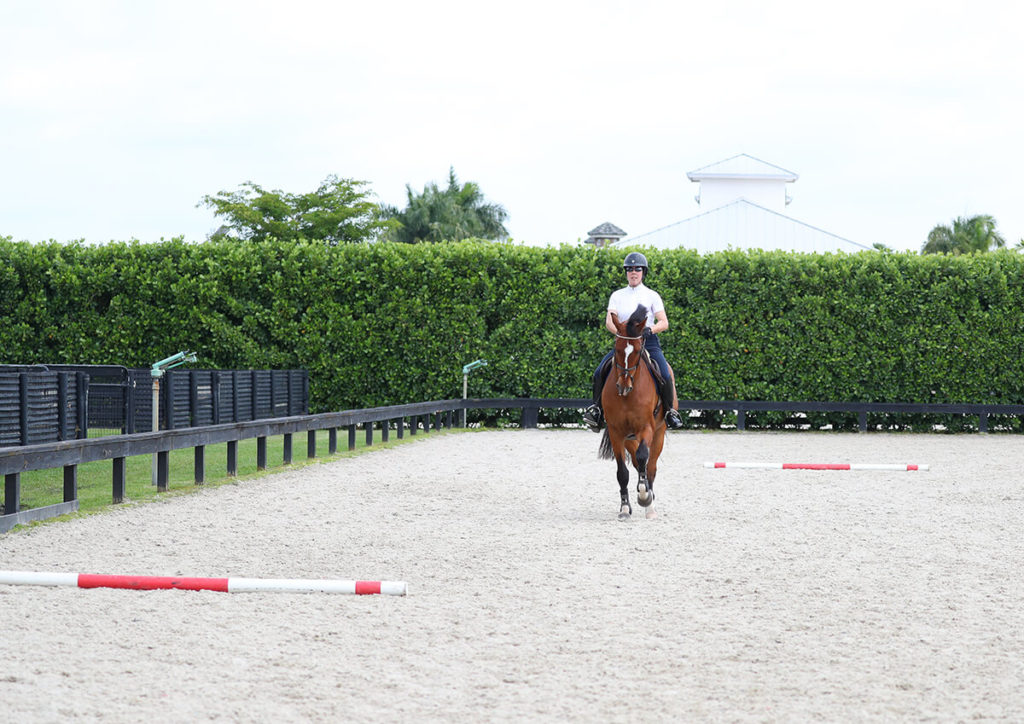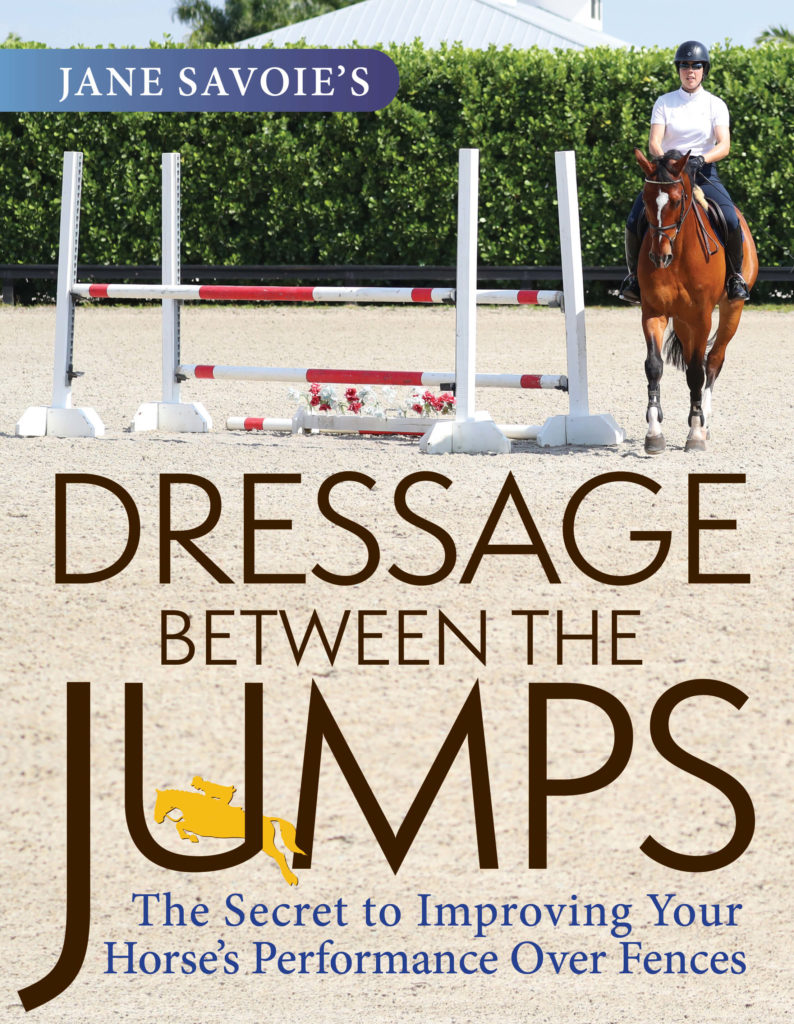This excerpt from “Jane Savoie’s Dressage Between the Jumps” by Jane Savoie is reprinted with permission of Trafalgar Square Books.
In this excerpt from Jane Savoie’s Dressage Between the Jumps, motivational master Jane Savoie gives us a terrific exercise on the flat to help fix the horse that drifts to one side over jumps.
Sometimes you’ll ride a horse whose whole body drifts sideways during the approach, the flight, or even the getaway. You might manage to make it over the first fence of a course, even though he’s drifting, but the drift will snowball so that eventually, at the fifth or sixth jump, you might have a runout.
This drift is a symptom of the same disease that causes the shoulders to “pop” out. In simple terms, the horse is crooked, and both hind legs aren’t underneath the body. If his left hind leg is over to the left, he’ll push diagonally across his body with it, which will make his body move to the right. On the other hand, if his right hind is placed to the right, he’ll push with that leg and drift to the left.
I’m going to show you a fun schooling exercise to gymnasticize your horse and correct this kind of “body drift.”
 Photo by Sue Stickle.
Photo by Sue Stickle.
The Staircase
Let’s say your horse drifts to the left because his right hind leg isn’t underneath him. In a staircase pattern, alternate doing a leg-yield for a few strides with riding straight ahead for a few strides. Do this in both the walk and the trot to make your horse obedient both to the aids that ask him to go sideways as well as the aids that ask him to go straight ahead. In addition, with each transition you are making your horse more supple and rideable.
- Track to the left off the rail in walk or trot.
- Flex your horse to the left, then leg-yield to the right away from your left leg for a few strides.
- Now go straight by closing both calves.
- Then leg-yield to the right again, creating a staircase pattern.
- Change direction and track to the right. Turn down the centerline, and leg-yield a couple of strides toward the track.
- Then close both legs and ride straight ahead for a few strides. Repeat the leg-yield. Then ride straight ahead again.
- Once you can ride the staircase both away from the track and toward the track, do the same thing on the diagonal.
- You can also do this exercise in the canter—you just can’t cover as much ground sideways as you can in the walk and trot.
The Staircase Between the Jumps
Again, pretend your horse‘s weaker hind leg is his right hind. He carries his right hind over to the right. As a result, he pushes diagonally across his body so that he ends up drifting to the left.
- Place two ground poles (or two low jumps) on the long side of the arena so they are offset and several strides apart, with one on the quarterline, and one on the rail.
- Go over the first pole, then leg-yield to the right for a couple of strides to get your horse’s hind legs underneath his body and prevent the drift to the left.
- Go straight for a couple of strides, then leg-yield to the right again until you are lined up with the center of the second pole.
- Ride straight and go over the second pole.
- During the getaway, you can continue the staircase pattern, alternating leg-yielding to the right for two strides with riding straight for two strides.
The Staircase is very helpful for two reasons: If your horse is drifting to the left on the approach to the jump, you can interrupt the sideways motion and ask him to go straight ahead. Since he’s familiar with the leg-yield (sideways) to straight exercise, it’ll be easier for him to correct the drift and go straight. Also, when you are tracking left and make a turn too late, and your horse isn’t headed toward the middle of the fence—he’s drifting toward the right—you can leg-yield to the left for a couple of strides to straighten your approach.
Pick up your copy of “Dressage Between the Jumps” here.

